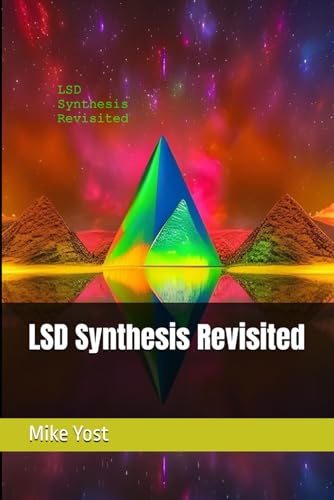LSD
Lysergic acid diethylamide, commonly known as LSD (from German Lysergsäurediethylamid) and by the slang names acid and lucy, is a semisynthetic hallucinogenic drug derived from ergot, known for its powerful psychological effects and serotonergic activity. It was historically used in psychiatry and 1960s counterculture; it is currently legally restricted but experiencing renewed scientific interest and increasing use. When taken orally, LSD has an onset of action within 0.4 to 1.0 hours (range: 0.1–1.8 hours) and a duration of effect lasting 7 to 12 hours (range: 4–22 hours). It is commonly administered via tabs of blotter paper. LSD is extremely potent, with noticeable effects at doses as low as 20 micrograms and is sometimes taken in much smaller amounts for microdosing. Despite widespread use, no fatal human overdoses have been documented. LSD is mainly used recreationally or for spiritual purposes. LSD can cause mystical experiences. LSD exerts its effects primarily through high-affinity binding to several serotonin receptors, especially 5-HT2A, and to a lesser extent dopaminergic and adrenergic receptors. LSD reduces oscillatory power in the brain's default mode network and flattens brain hierarchy. At higher doses, it can induce visual and auditory hallucinations, ego dissolution, and anxiety. LSD use can cause adverse psychological effects such as paranoia and delusions and may lead to persistent visual disturbances known as hallucinogen persisting perception disorder (HPPD). Swiss chemist Albert Hofmann first synthesized LSD in 1938 and discovered its powerful psychedelic effects in 1943 after accidental ingestion. It became widely studied in the 1950s and 1960s. It was initially explored for psychiatric use due to its structural similarity to serotonin and safety profile. It was used experimentally in psychiatry for treating alcoholism and schizophrenia. By the mid-1960s, LSD became central to the youth counterculture in places like San Francisco and London, influencing art, music, and social movements through events like Acid Tests and figures such as Owsley Stanley and Michael Hollingshead. Its psychedelic effects inspired distinct visual art styles, music innovations, and caused a lasting cultural impact. However, its association with the counterculture movement of the 1960s led to its classification as a Schedule I drug in the U.S. in 1970. It was also listed as a Schedule I controlled substance by the United Nations in 1971 and remains without approved medical uses. Despite its legal restrictions, LSD remains influential in scientific and cultural contexts. Research on LSD declined due to cultural controversies by the 1960s, but has resurged since 2009. In 2024, the U.S. Food and Drug Administration designated a form of LSD (MM120) a breakthrough therapy for generalized anxiety disorder. As of 2017, about 10% of people in the U.S. had used LSD at some point, with 0.7% having used it in the past year. Usage rates have risen, with a 56.4% increase in adult use in the U.S. from 2015 to 2018.
This article uses material from the Wikipedia article "LSD", which is released under the Creative Commons Attribution-Share-Alike License 3.0.
References
| Title | Summary | |
|---|---|---|
| Resident Alien {An Alien in New York} | ... the streets while tripping on LSD | |












